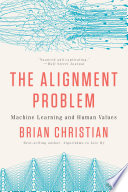

The alignment problem in machine learning refers to the challenge of ensuring that the objectives programmed into AI systems align with human values and intentions. This problem arises because AI systems, particularly those based on machine learning, learn from vast amounts of data and can develop behaviors that are not easily interpretable by humans. The book delves into the complexity of defining what human values are and how they can be effectively translated into machine-readable formats. It highlights the risks associated with misalignment, such as unintended consequences that can arise from AI decisions that diverge from human ethical standards. The author emphasizes the need for interdisciplinary approaches, combining insights from computer science, ethics, sociology, and psychology to address this multifaceted issue.
Continue readingData is the cornerstone of machine learning, serving as the foundation upon which AI systems learn and make decisions. The book discusses how the quality and nature of data can significantly influence the behavior of AI models. Biased or incomplete datasets can lead to skewed outcomes, perpetuating existing societal biases or generating new ones. The author illustrates this with real-world examples where AI systems have failed to align with human values due to flawed data inputs. The importance of curating diverse and representative datasets is emphasized, as well as the necessity of ongoing monitoring and adjustment of AI systems to ensure they remain aligned with evolving human values.
Continue readingTo address the alignment problem, the book advocates for a human-centered design approach in AI development. This involves actively involving stakeholders, including users and affected communities, in the design process to ensure that their values and needs are adequately represented. The author discusses various methodologies for incorporating human feedback into AI systems, such as participatory design and iterative testing. This approach not only enhances the relevance of AI systems but also fosters trust and accountability in AI technologies. By prioritizing user engagement, developers can create more robust systems that better serve societal needs.
Continue readingThe book explores various ethical frameworks that can guide the development and deployment of AI technologies. It discusses principles such as fairness, accountability, transparency, and privacy, and how these can be operationalized in AI systems. The author critiques existing regulatory approaches and suggests that a more nuanced understanding of ethics is necessary to navigate the complexities of AI behavior. By establishing clear ethical guidelines, developers and policymakers can work towards creating AI systems that not only perform well but also adhere to societal norms and values.
Continue readingExplainability is a crucial aspect of ensuring AI alignment with human values. The book discusses the challenges associated with black-box models that operate without transparency, making it difficult for users to understand how decisions are made. The author argues that explainable AI can help bridge the gap between machine learning outputs and human comprehension, allowing stakeholders to better assess and trust AI systems. The book presents various techniques for enhancing explainability, such as model interpretability tools and user-friendly interfaces that demystify AI decision-making processes.
Continue readingThe alignment problem is not solely a technical challenge; it also requires collaboration across disciplines and sectors. The book emphasizes the importance of interdisciplinary research and partnerships between academia, industry, and government to tackle the complexities of AI safety. The author highlights examples of successful collaborations that have led to innovative solutions for alignment issues. By fostering a culture of collaboration, stakeholders can share knowledge, resources, and best practices to create more effective and safer AI systems.
Continue readingLooking ahead, the book discusses the potential trajectories of AI development and the ongoing challenges of ensuring alignment with human values. The author speculates on future scenarios where AI could either enhance or undermine societal well-being, depending on how alignment issues are addressed. The need for proactive engagement with ethical considerations and societal implications is emphasized, as well as the importance of public discourse on the role of AI in shaping future human experiences. The author encourages readers to think critically about the impact of AI on society and to advocate for responsible development practices.
Continue reading